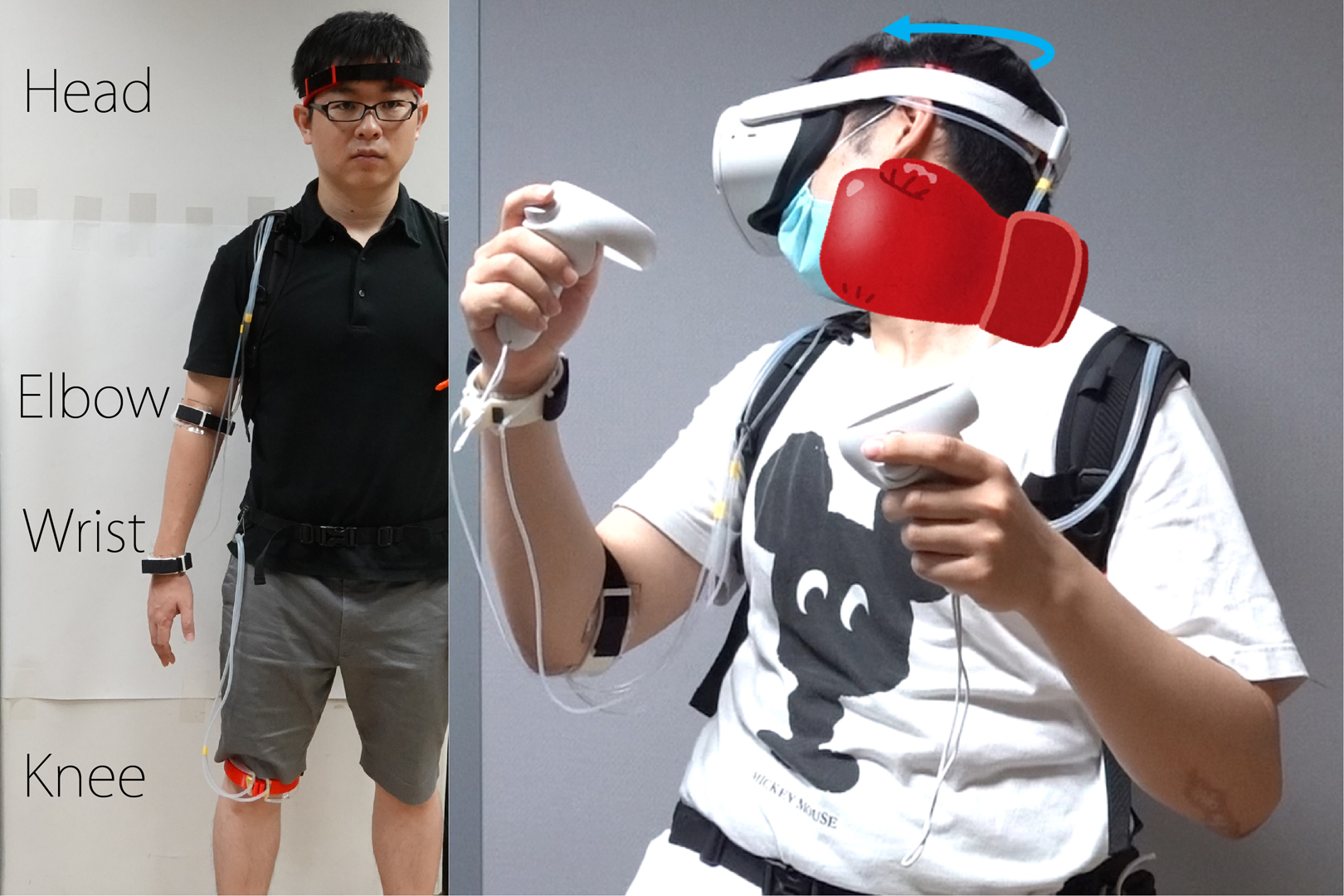“HangerBody: a Haptic Device Using Haptic Illusion for Multiple Parts of Body”
Conference:
Experience Type(s):
Title:
- HangerBody: a Haptic Device Using Haptic Illusion for Multiple Parts of Body
Organizer(s)/Presenter(s):
Description:
The hanger reflex is a phenomenon in which a strong sense of rotational force is perceived when one wares a wire hanger on his/her head. This phenomenon is caused by lateral skin stretch generated by pressure from the wire hanger on the head, and similar phenomena have been observed in the wrist, ankle, knee and elbow. However, the hanger reflex has been applied to only one part of the body, but not to multiple parts of the body simultaneously. In this study, we propose the HangerBody system, which applies the hanger reflex to multiple parts of body simultaneously in order to expand the range of applications. In this paper, we introduce the system configuration and some examples of applying the system to VR games, sports training, rehabilitation, and remote assistance.
References:
[1]
Yuki Kon, Takuto Nakamura, and Hiroyuki Kajimoto. 2017. HangerON: A Belt-Type Human Walking Controller Using the Hanger Reflex Haptic Illusion. In ACM SIGGRAPH 2017 Emerging Technologies (Los Angeles, California) (SIGGRAPH ’17). Association for Computing Machinery, New York, NY, USA, Article 10, 2 pages. https://doi.org/10.1145/3084822.3084833
Digital Library
Google Scholar
[2]
Yuki Kon, Takuto Nakamura, Michi Sato, and Hiroyuki Kajimoto. 2016. Effect of Hanger Reflex on walking. In 2016 IEEE Haptics Symposium (HAPTICS). 313–318. https://doi.org/10.1109/HAPTICS.2016.7463195
Crossref
Google Scholar
[3]
Masahiro Miyakami, Yuki Kon, Takuto Nakamura, and Hiroyuki Kajimoto. 2018. Optimization of the hanger reflex (I): examining the correlation between skin deformation and illusion intensity. In International Conference on Human Haptic Sensing and Touch Enabled Computer Applications. Springer, 36–48.
Crossref
Google Scholar
[4]
Jun Rekimoto. 2014. Traxion: A Tactile Interaction Device with Virtual Force Sensation. In ACM SIGGRAPH 2014 Emerging Technologies (Vancouver, Canada) (SIGGRAPH ’14). Association for Computing Machinery, New York, NY, USA, Article 25, 1 pages. https://doi.org/10.1145/2614066.2614079
Digital Library
Google Scholar
[5]
Hanamichi Sanada, Masato Kobayashi, Yuki Kon, and Hiroyuki Kajimoto. 2020. Investigation of Effective Parts for Rotation and Translation of the Legs Using Hanger Reflex. In Proceedings of the Augmented Humans International Conference (Kaiserslautern, Germany) (AHs ’20). Association for Computing Machinery, New York, NY, USA, Article 14, 6 pages. https://doi.org/10.1145/3384657.3384786
Digital Library
Google Scholar
[6]
Michi Sato, Rika Matsue, Yuki Hashimoto, and Hiroyuki Kajimoto. 2009. Development of a head rotation interface by using Hanger Reflex. In RO-MAN 2009 – The 18th IEEE International Symposium on Robot and Human Interactive Communication. 534–538. https://doi.org/10.1109/ROMAN.2009.5326327
Crossref
Google Scholar
[7]
Vibol Yem, Mai Otsuki, and Hideaki Kuzuoka. 2015. Development of wearable outer-covering haptic display using ball effector for hand motion guidance. In Haptic Interaction. Springer, 85–89.
Google Scholar





